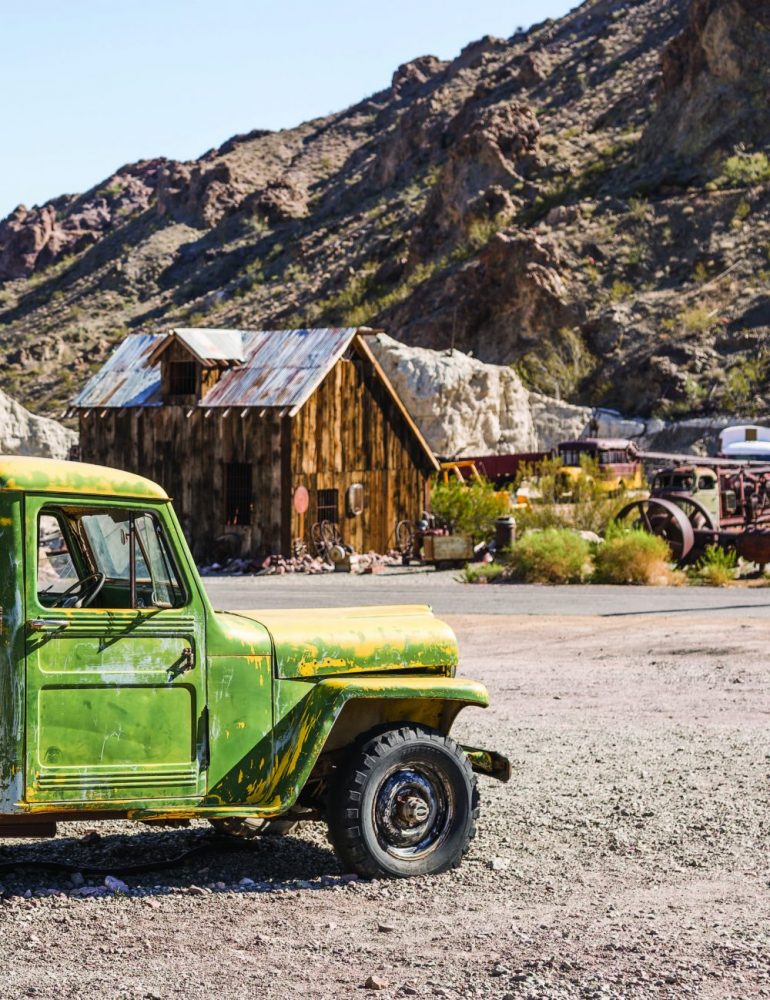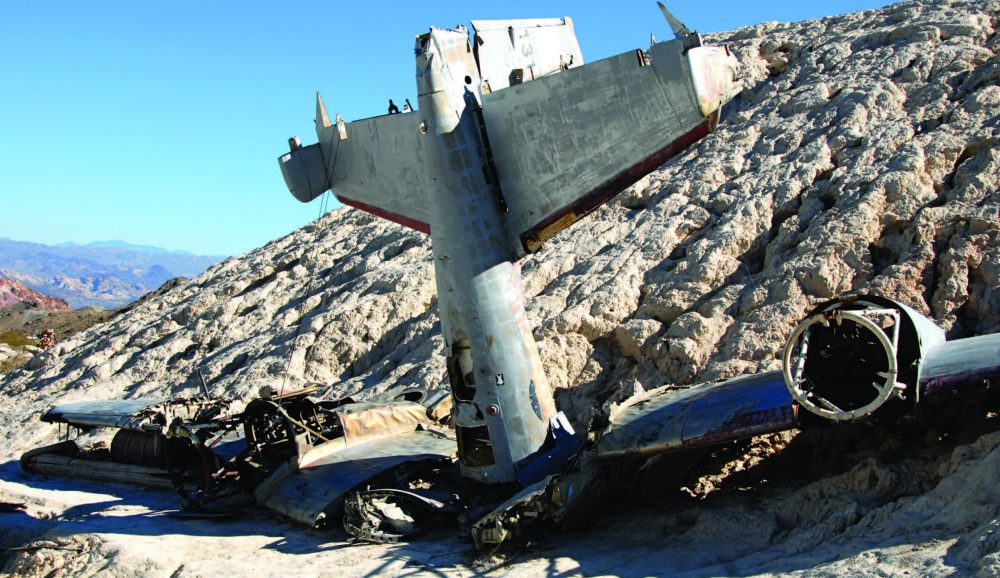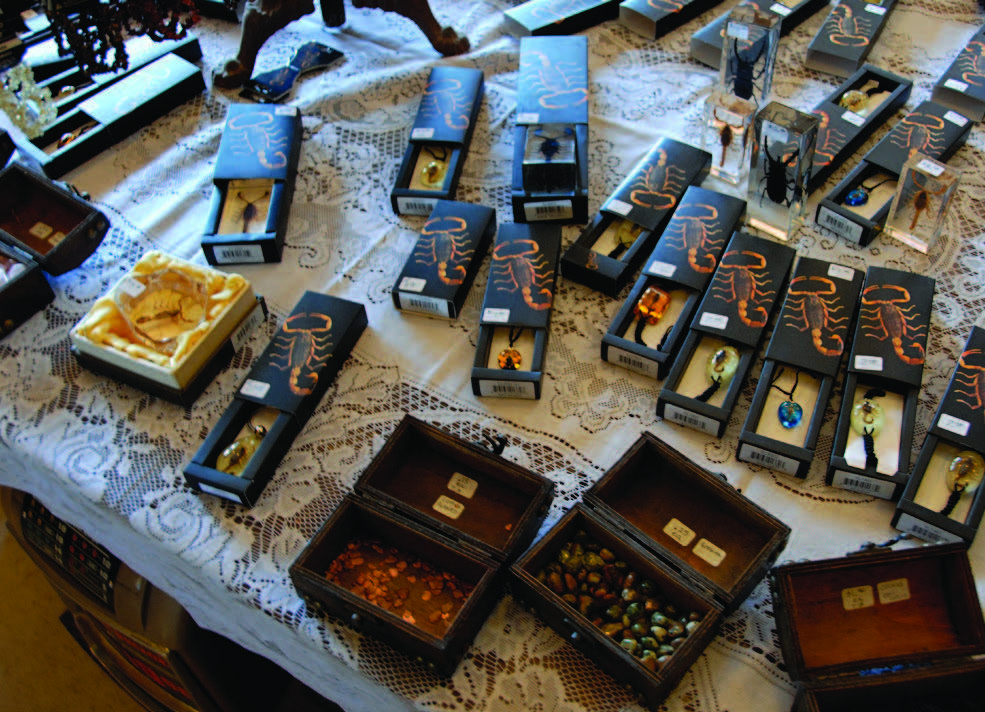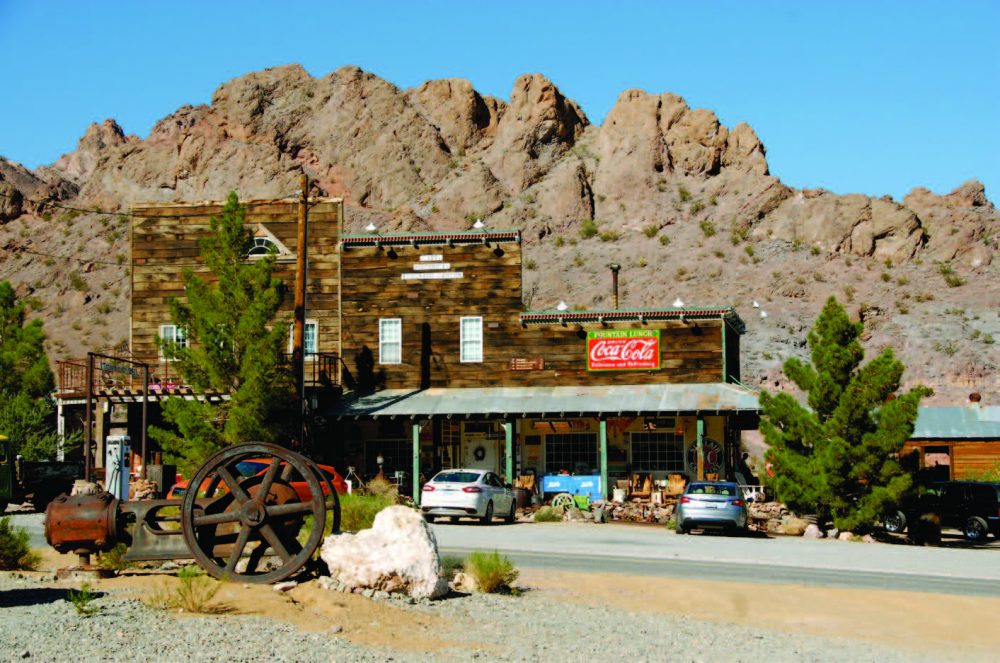Eldorado Canyon
January – February 2014
ELDORADO CANYON

Nevada’s Wild West roots are encapsulated in this living ghost town.
BY ERIC CACHINERO
At first glance, Eldorado Canyon visitors may not be aware they’re standing on ground that at one time epitomized the Wild West. A region deluged in riches and plagued by lawlessness, greed, and murder, the history of this Southern Nevada treasure was crafted in blood and gold. Though the days of harboring Civil War deserters may be a thing of the past, the resonance of an unruly population can still be felt echoing throughout the canyon walls.
NOT YOUR EVERYDAY GHOST TOWN
In the heart of Eldorado Canyon, just east of Nelson, lies the Techatticup Mine—a popular destination for photographers and adventurers. Owners Tony and Bobbie Werly first took notice of the old mining camp while retrieving canoes for their former Colorado River canoe rental business. In 1994, the Werlys purchased 50 acres that included several mining claims, a store, a stamp mill, a bunkhouse, and a few tin miner cabins. Since then, the couple has been restoring the area, even opening up the Techatticup Mine for tours. Though the area has become a popular tourist destination (located approximately one hour south of Las Vegas), Tony emphasizes to visitors that this is authentic Nevada history. “We remind people that this isn’t Disneyland,” Tony says. But to truly grasp the significance of Eldorado Canyon and the Techatticup Mine, a look back at the region’s origins is necessary.

THE CANYON OF GOLD
According to the Werlys, the region owes its roots to the pre-Paiute basketweavers. After the basketweavers, Paiute and Mojave tribes inhabited the area relatively uninterrupted before the Spanish—in their conquest for gold—descended upon the canyon in the 1700s. The Spanish commenced mining in the area on the banks of the Colorado River, but found mostly silver before deeming the area unproductive and moving on. Nearly 75 years later, the area would be visited by prospectors employing different methods, which allowed them to uncover the gold that had eluded the Spanish. The finds remained relatively secret until 1858, when steamboats began making their way up the Colorado River, causing whispers of gold to swell into a full-fledged mining boom. In 1861 came the discovery of the Techatticup and Queen City mines, the combination of which formed one of the richest mining districts in pre-Nevada. The mines were owned by prominent California politician George Hearst. The name Techatticup derived from two Paiute words meaning “hungry” and “bread,” as many Paiutes in the surrounding barren hills are reported to have frequented the mining camps begging for food. Because of Eldorado Canyon’s remoteness, vigilantism became the law of the land. According to Tony, even murder was not a heinous enough crime to warrant the involvement of the law. “In the 1870s, the nearest sheriff lived in Pioche, which was 200 miles north,” Tony says. “It took him a week to get there, so not even a killing was a good enough reason for him to come.” The isolated canyon soon became a haven for Civil War deserters, and gunfights became commonplace. An ownership and labor dispute over the Techatticup Mine only fueled the fire. At one point, gunfights and killings in the canyon became frequent enough that even lawmen skirted the disputes. Camp Eldorado, a military settlement, was established to protect steamboat traffic and deter local Indians who were raiding the canyon.
But blood wasn’t spilled only at the hands of prospectors. Eldorado Canyon was also home to two of Nevada’s most notorious renegade Indians—Ahvote and Queho. Ahvote is said to have murdered five victims, while Queho is believed to have killed more than 20. According to a plaque near the Techatticup Mine, Queho killed his last victim, Maude Douglas, in 1919, then managed to successfully elude sheriff ‘s posses. In the 1920s, nearby Nelson’s Landing—a port on the Colorado River which lies at the mouth of Eldorado Canyon—became one of the most active ports on the river. Later, preliminary work on the Hoover Dam also made Nelson’s Landing an attractive place for surveyors to operate small boats, and, after the dam’s completion, acted as a popular destination for fisherman and tourists. The Techatticup Mine remained active until the mid-1940s, yielding millions of dollars in precious metals during its productive years. Nearly 10 years later—after the completion of the Davis Dam—the rising water levels and subsequent creation of Lake Mojave meant some changes to the region were due. ” The old cemetery used to be further down the canyon,” Tony says. “It was moved after the creation of the lake came close to washing the bodies away.” The new cemetery stands approximately one mile west up the canyon from Nelson’s Landing.


BEYOND THE BLOODSHED
Now that the happenings that earned Eldorado Canyon its notorious reputation are no longer a part of daily life there, it has become a popular Hollywood set. The canyon has been a filming location for several movies and television shows including the 2001 crime film “3,000 Miles to Graceland” and—more recently—the National Geographic Channel’s “Brain Games.” Tony and Bobbie now reside in Eldorado Canyon and operate Techatticup Mine tours. The guided above and underground tour takes visitors into one of the oldest and most famous gold mines in Southern Nevada. The Werlys also operate a museum/gift shop near the mine, which holds an eclectic collection of historical items from the area. Though details are still vague, the Werlys are rumored to be opening up a new mine tour this year, which will include underground mine tunnels. Tony explains that the new tour will be somewhat physically demanding, and thrill seekers must be ready for anything. “We’re gonna call it the mother lode tour,” Tony says.
